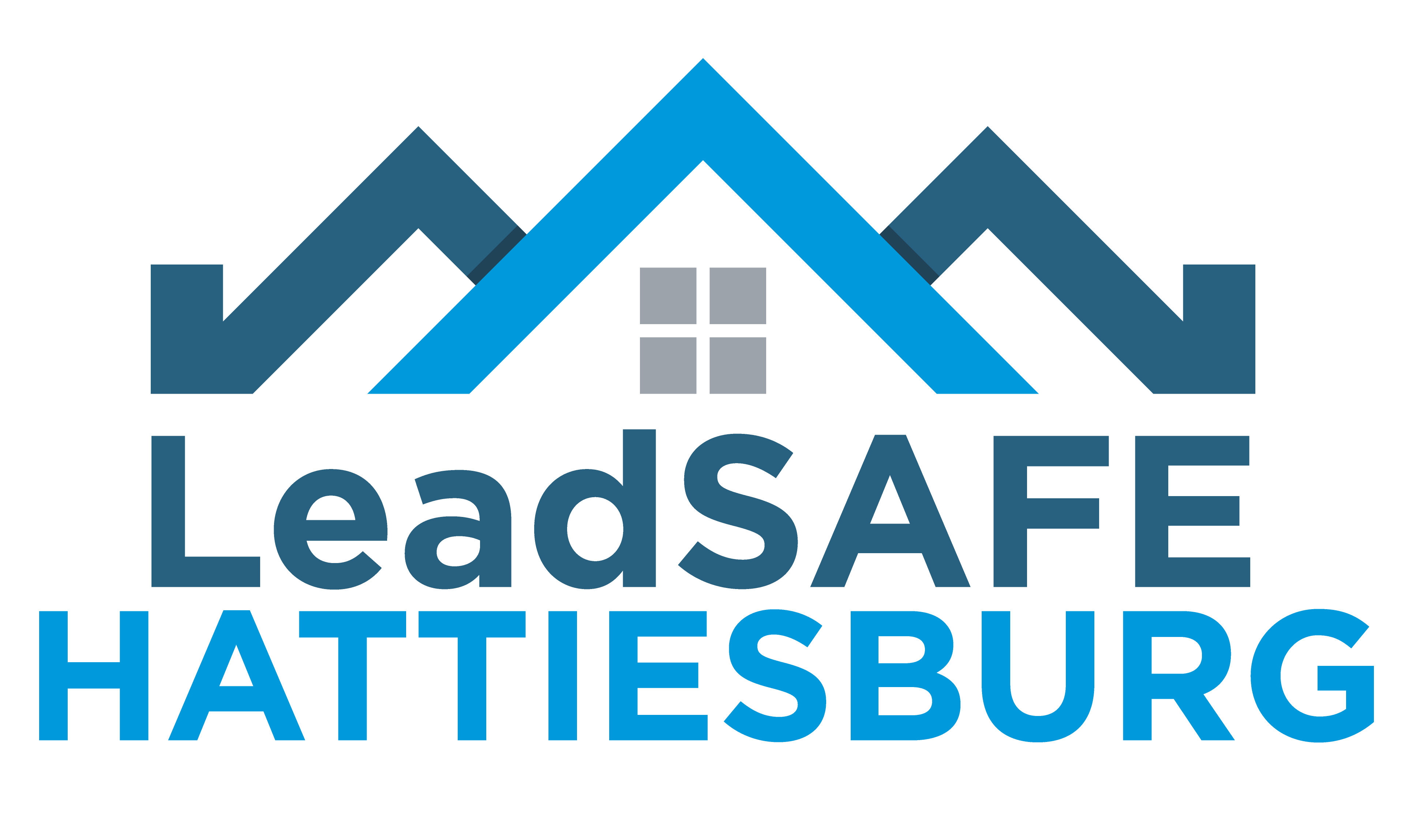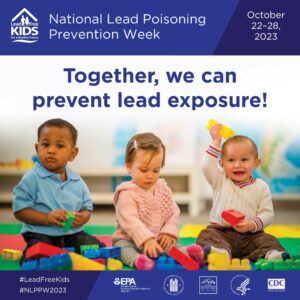LeadSAFE Hattiesburg

CONTACT INFORMATION
Located at Hattiesburg City Hall, the office is open Monday through Friday, between the hours of 8 a.m. and 5 p.m.
Chiquila Dolison, LeadSAFE Hattiesburg Program Manager
leadsafe@hattiesburgms.com
200 Forrest Street
Post Office Box 1898
Hattiesburg, MS 39403-1898
601-554-1006
Community Development Division Staff
Dequandra Johnson, Acting Division Manager
Chiquila Dolison, LeadSAFE Hattiesburg Program Manager
Kassy McMillin, Housing Coordinator
Sir Jarrick Pizzferro, Housing Inspector
Sharon Newsom, Office Manager
The work that provided the basis for this publication was supported by funding under an award with the U.S. Department of Housing and Urban Development. The substance and findings of the work are dedicated to the public. The author and publisher are solely responsible for the accuracy of the statements and interpretations contained in this publication. Such interpretations do not necessarily reflect the views of the Government.
ABOUT THE PROGRAM
The LeadSAFE Hattiesburg program is a lead hazard reduction program for income-eligible residents living within Hattiesburg’s city limits. It is funded in part by the U.S. Department of Housing and Urban Development (HUD) – Office of Lead Hazard Control and Healthy Homes (OLHCHH) and the City of Hattiesburg. The purpose of LeadSAFE Hattiesburg is to identify and control lead-based paint hazards in eligible privately owned rental and owner-occupied housing.
As a whole, the program aims to protect children and families from lead-based paint (LBP) hazards by using LBP hazard safety training, as well as interim controls and abatement.
- Interim controls are measures intended to reduce exposure to lead-based paint and must be maintained in the future to prevent the hazards from returning.
- Abatement is a set of measures intended to permanently eliminate LBP hazards.
Funded by a federal grant that provides financial assistance to low and moderate-income homeowners and rental property owners to reduce LBP hazards within the home, this program works toward making homes lead-safe for children and families.
LBP HAZARD SAFETY TRAINING
As a part of the LeadSAFE Hattiesburg program, the City of Hattiesburg is working with Mississippi State University Environmental Programs to offer a variety of lead-based paint (LBP) hazard safety training courses. The Environmental Protection Agency (EPA) has specific certification requirements for renovators and other contractors. Through these course offerings, you can obtain certification and meet the EPA’s requirements.
Course Requirements:
To register for a course, participants must have a High School Diploma or GED, reside within the city limits of Hattiesburg and must not exceed income limits for HUD. For registration information and additional details, contact the LeadSAFE Hattiesburg program at 601-554-1006.
LBP HAZARD ABATEMENT PROGRAM
The LeadSAFE Hattiesburg program is a lead hazard reduction program for income-eligible residents who live within the city limits of Hattiesburg. Participation in the program requires a paint inspection of the property to determine the presence of lead-based paint hazards. The following questions will be used to determine eligibility:
- Do you own or rent your home? (Either may qualify.)
- Is the home located in the city limits of Hattiesburg?
- Is there a child six years of age or under and/or a pregnant woman occupying the home at least six hours per week?
- Was the home built before 1978?
- Does the household meet HUD income requirements?
HUD INCOME REQUIREMENTS
| Household Size | Maximum Income |
| 1 Person | $40,950 |
| 2 Persons | $46,800 |
| 3 Persons | $52,650 |
| 4 Persons | $58,500 |
| 5 Persons | $63,200 |
| 6 Persons | $67,900 |
| 7 Persons | $72,550 |
| 8 Persons | $77,250 |
*Income cannot exceed limits above
DANGERS OF LEAD BASED PAINT HAZARDS
What is Lead?
Lead is a dense metallic naturally occurring mineral that has no benefit to the human body. Lead’s high density, low melting point, ductility and relative inertness to oxidation make it useful. These properties, combined with its relative abundance and low cost, resulted in its extensive use in construction, plumbing, batteries, bullets and shot, weights, solders, pewters, fusible alloys, white paints, leaded gasoline, and radiation shielding. While lead-based paint and leaded gasoline were taken out of production in North America and Europe over 40 years ago, some countries still produce things like toys that have lead-based paints.
What is a Lead Hazard?
If your home was built prior 1978, it could contain lead-based paint. The older your home, the greater the chances of having lead-based paint or high levels of lead dust. Lead-based paint that is in poor condition and peeling, crackled, chipping, chalking or applied to friction and impact surfaces (such as windows and doors) can create a Lead Hazard. Lead dust and lead-contaminated soils are also considered Lead Hazards.
How do you get lead poisoning?
Lead enters your body each time you inhale leaded fumes or dust, or swallow something that contains lead. If you are exposed to small amounts of lead over time or one large dose, your body may take in more lead than it can clean out. Lead poisoning is a disease that occurs when too much lead builds up in the body.
How does lead harm the body?
Lead can harm both children and adults. Many times there are no symptoms until the health problems are very serious. Usually people who are lead poisoned do not seem to be sick. Lead can cause high blood pressure and kidney damage in adults. When young children are exposed to lead, they are at risk for: brain and nervous system damage, slowed growth and development, learning and behavior problem and hearing and speech problems. Common symptoms of lead poisoning include: no desire to eat food, damage to IQ, damage to brain and nervous system, damage to kidneys, headaches, lack of energy, constipation, and stomach cramps.
Who is at risk?
Children under the age of 6 who spend time in homes built before 1978, with chipping or peeling paint, are at greatest risk. Adults who work with lead on the job are also at high risk. This can include painters, remodelers, or workers in smelters or battery plants. People remodeling their homes may also be at risk, if the paint in the home has lead in it. Family members can also become lead poisoned while the lead-based paint is being removed from the home, if the work is not done properly. Lead was allowed in household paint until 1978. The older your home is, the more likely it is to contain lead-based paint. Paints containing up to 50 percent lead were used on the inside and outside of homes through the 1950s. A pregnant or nursing woman’s exposure to lead can harm her unborn baby or child.



